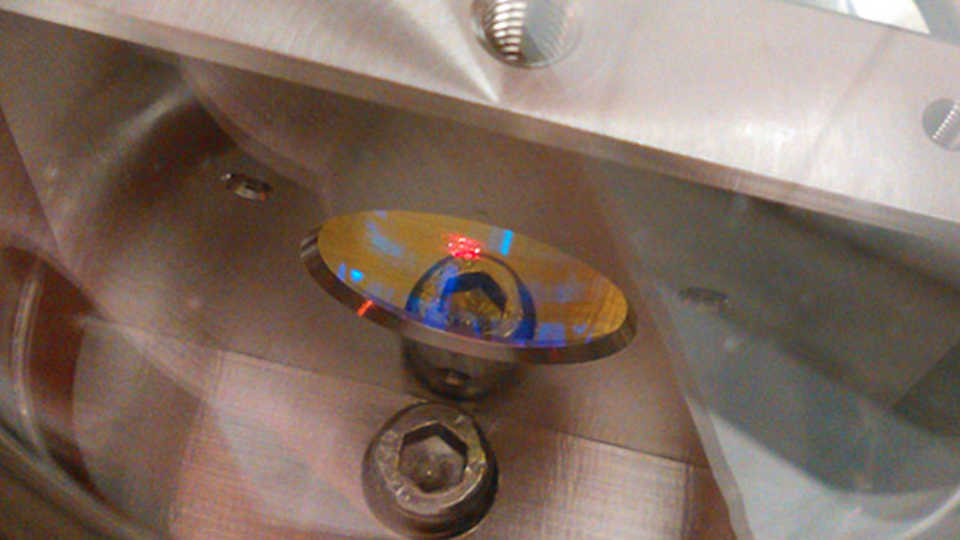Each month, renowned astronomers share their latest research at Morrison Planetarium.
Universe Update
All in a Day's Measurement

Just in time (er, space-time?) for Einstein’s birthday, Italy’s Laboratori Nazionali del Gran Sasso (LNGS) at the National Institute for Nuclear Physics (INFN) has announced progress on their research program to measure a tiny effect of Einstein’s General Theory of Relativity—specifically, Einstein-Thirring-Lense precession (a.k.a. “frame dragging”). Moreover, this technique will allow scientists to measure changes in Earth’s rotation with astonishing accuracy.
The program, cleverly acronym’d GINGER (for “Gyroscopes IN GEneral Relativity”), proposes placing three gyroscopes—each six meters (20 feet) in diameter—in an underground configuration that will allow for precision measurement of Earth’s rotation. Because Earth rotates, it warps space-time in a particular, measurable way, and the super-sensitive gyroscopes will be able to measure that effect.
And although we all know that Earth turns on its axis once every 24 hours (well, once every 23 hours, 56 minutes, 4 seconds, and on and on), that period varies slightly over time. Astronomers typically measure these variations by monitoring crazy-distant objects such as quasars, but that comes with a crazy-expensive price tag, since it requires coordinating across numerous observations to make precise measurements. The Italians (and their international collaborators) are looking to save some denaro by designing a self-contained system for doing the same job.
You might think of gyroscopes as toys (no endorsement implied), but you can also find them in steadicams and smart phones. And although the most familiar gyroscopes use a spinning wheel to maintain their orientation, other, more sophisticated technology can do the same job. Ring laser gyroscopes (RLGs) show up in everything from airplanes to the International Space Station, and they’re GINGER’s technology of choice.
(By the bye, lasers are themselves a direct technological application of Einstein‘s theories—not of relativity, but of his theory of the “stimulated emission of radiation,” a.k.a the “ser” in the laser acronym. That’s right! Einstein laid the theoretical groundwork for lasers fully a century ago.)
Today’s publication concerns the smaller-scale prototype for GINGER—dubbed GINGERino, to remind you that this is an Italian project—which just completed its first test runs. Its single gyroscope is a mere 3.6 meters (12 feet) in diameter, but hey, you gotta start somewhere. And GINGERino has already started to produce interesting test results.
“One peculiarity of the GINGERino installation is that it’s intentionally located within a high seismicity area of central Italy,” said Jacopo Belfi, lead author and INFN researcher. “Unlike other large RLG installations, GINGERino can actually explore the seismic rotations induced by nearby earthquakes.” Normally, this kind of observation requires multiple seismometers in different locations, but a single RLG (plus a lone seismometer) can make the same measurements.
So far, so good. GINGERino achieved its initial goals, although it needs to be about 10,000 times more sensitive to make the refined measurements of Earth’s rotation! That sensitivity will come with the full-blown GINGER setup, and with any luck, the results will do Einstein proud.
Image: https://web.infn.it/GINGER/index.php/it/